Embark on a journey through the hallowed halls of the Accademia Gallery, a sanctuary of art that has captivated hearts and minds for centuries. From the masterpieces of Michelangelo to the captivating works of other renowned artists, this Florentine gem offers an unparalleled immersion into the realm of artistic brilliance.
Nestled in the heart of Florence, the Accademia Gallery stands as a testament to the city’s rich artistic heritage. Founded in the 18th century, it has played a pivotal role in shaping the course of art history, preserving and showcasing some of the world’s most iconic creations.
Historical Significance
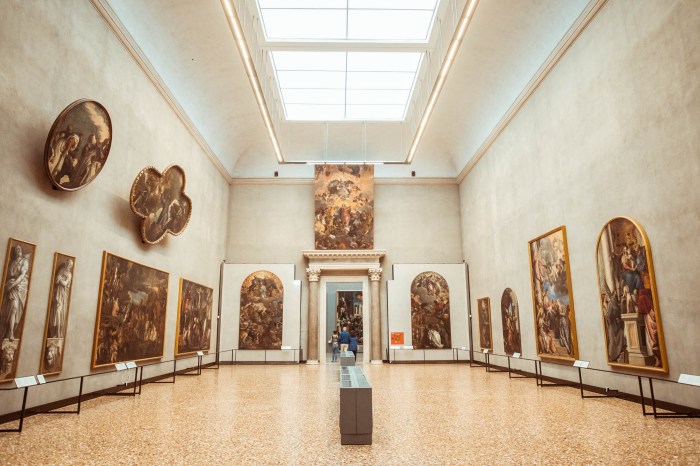
The Accademia Gallery was established in 1784 by Grand Duke Peter Leopold of Tuscany, who intended it to be a teaching institution for the students of the Accademia di Belle Arti (Academy of Fine Arts). The gallery was originally housed in the Uffizi Gallery, but in 1873 it was moved to its current location in the former Convent of San Niccolò di Cafaggio.
The Medici family played a significant role in the development of the Accademia Gallery. Cosimo I de’ Medici founded the Accademia di Belle Arti in 1563, and the gallery was originally intended to house the academy’s collection of works of art. The Medici family also donated a number of important works to the gallery, including Michelangelo’s David and Botticelli’s Birth of Venus.
Key Events in the History of the Accademia Gallery
- 1784: The Accademia Gallery is founded by Grand Duke Peter Leopold of Tuscany.
- 1873: The gallery is moved to its current location in the former Convent of San Niccolò di Cafaggio.
- 1991: The gallery is renovated and expanded.
- 2012: The gallery is reopened after a major restoration.
Architectural Features

The Accademia Gallery is renowned for its impressive architectural design, showcasing a harmonious blend of historical and contemporary elements.
The original building, dating back to the 16th century, exemplifies the Florentine Renaissance architectural style. Its façade features a rusticated stone exterior, arched windows, and a grand portal adorned with sculptures.
Layout and Design of Exhibition Spaces
The gallery’s interior layout has been thoughtfully designed to maximize the display and appreciation of its extensive collection. The exhibition spaces are organized into chronologically arranged rooms, each dedicated to a specific period or artistic movement.
The rooms are spacious and well-lit, with high ceilings and ample natural light. The walls are painted in neutral tones, providing an elegant backdrop for the artworks. The flooring is a combination of marble and wooden parquet, adding a touch of warmth and sophistication to the spaces.
Notable Architectural Features
Among the gallery’s notable architectural features is the Tribuna, a small octagonal room located at the heart of the building. Designed by Bernardo Buontalenti in the late 16th century, the Tribuna was intended to house the Medici family’s most prized art collection.
The room features a domed ceiling decorated with intricate frescoes and a series of niches that display sculptures by renowned artists such as Michelangelo, Donatello, and Giambologna.
Renovations and Additions
The Accademia Gallery has undergone several renovations and additions over the centuries. In the 19th century, the building was expanded to accommodate the growing collection. The most significant addition was the Sala del Colosso, designed by Emilio De Fabris and completed in 1882.
Discover the captivating Accademia Gallery, where masterpieces by Michelangelo, including the iconic David, reside. If you seek an extraordinary travel experience, explore luxury travel deals that cater to discerning travelers. Immerse yourself in the art and culture of Florence while indulging in the finer things in life, making your visit to the Accademia Gallery an unforgettable experience.
The Sala del Colosso is a vast hall that houses Michelangelo’s colossal statue of David. The room features a high vaulted ceiling and large windows that provide ample natural light. The statue is placed on a pedestal in the center of the room, allowing visitors to admire its grandeur from all angles.
Art Collection
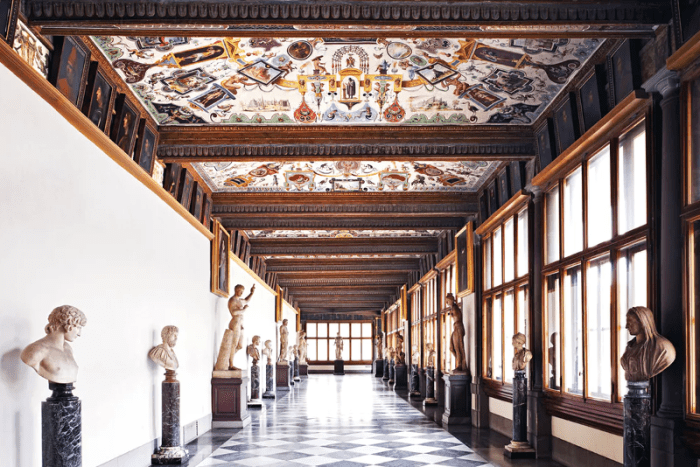
The Accademia Gallery houses an impressive collection of Renaissance and Mannerist art, with a particular focus on the works of Michelangelo. The gallery is home to some of the most iconic works of art in the world, including Michelangelo’s David and Pietà Bandini.
The collection also includes works by other notable artists, such as Botticelli, Raphael, and Titian. The gallery is a must-see for any visitor to Florence, and its collection is sure to impress even the most discerning art lover.
Most Famous Works of Art
- David by Michelangelo: This is one of the most famous sculptures in the world and is considered a masterpiece of the Renaissance. The sculpture depicts the biblical figure of David before his battle with Goliath.
- Pietà Bandini by Michelangelo: This is a marble sculpture of the Virgin Mary holding the body of Christ. It is one of the most moving and compassionate depictions of this subject ever created.
- The Birth of Venus by Botticelli: This is one of the most iconic paintings of the Renaissance. It depicts the goddess Venus emerging from the sea, surrounded by a group of nymphs.
- The School of Athens by Raphael: This is a fresco that depicts a group of philosophers and scientists gathered in a classical setting. It is one of the most famous and influential works of the Renaissance.
- The Assumption of the Virgin by Titian: This is a large oil painting that depicts the Virgin Mary being taken up into heaven. It is one of the most famous and admired works of the Venetian Renaissance.
Artistic Styles and Techniques
The Accademia Gallery’s collection represents a wide range of artistic styles and techniques. The Renaissance period is well-represented, with works by some of the most famous artists of the era. The gallery also houses a number of Mannerist works, which are characterized by their elongated figures and exaggerated poses.
The collection includes paintings, sculptures, drawings, and prints. The paintings are executed in a variety of techniques, including oil, tempera, and fresco. The sculptures are made from a variety of materials, including marble, bronze, and wood.
Conservation and Restoration
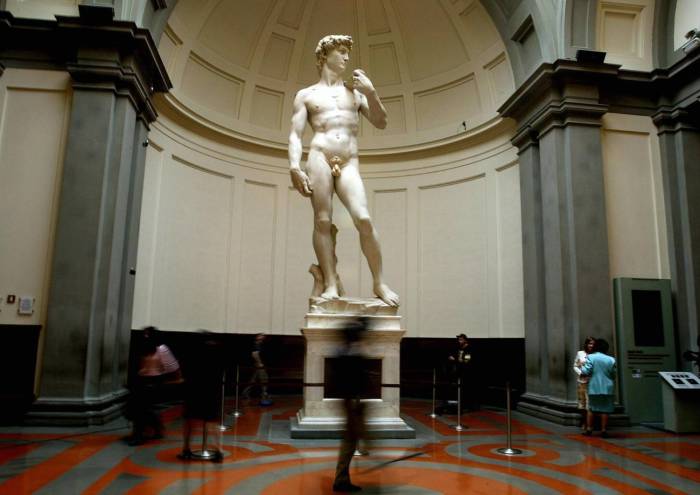
The Accademia Gallery is committed to preserving its valuable artwork for future generations. Conservation efforts involve a range of techniques and challenges, including:
Conservation Techniques
Conservators employ various techniques to maintain the integrity of the artworks. These include:
- Environmental control: Regulating temperature, humidity, and light levels to prevent damage.
- Cleaning: Removing dirt, grime, and other contaminants that can damage the surface.
- Restoration: Repairing damaged or aging pieces, such as filling cracks or retouching paint.
- Preventive conservation: Implementing measures to prevent future damage, such as using protective coatings or display cases.
Challenges in Restoration
Restoring damaged or aging artwork presents several challenges:
- Identifying original materials and techniques: Understanding the artist’s original intent is crucial for accurate restoration.
- Balancing preservation and aesthetics: Restorations must preserve the integrity of the artwork while also maintaining its aesthetic value.
- Reversibility: Restoration techniques should be reversible to allow for future adjustments or corrections.
Successful Conservation Projects, Accademia gallery
The Accademia Gallery has undertaken numerous successful conservation projects, including:
- The restoration of Botticelli’s Primavera, which involved cleaning and repairing the damaged canvas.
- The restoration of Michelangelo’s David, which included removing centuries-old dirt and wax buildup.
- The conservation of Leonardo da Vinci’s The Last Supper, which involved stabilizing the paint layer and preventing further deterioration.
Educational Programs and Outreach
The Accademia Gallery is dedicated to promoting art education and appreciation. It offers a wide range of educational programs tailored to diverse audiences, from school children to art enthusiasts.
The gallery’s educational programs aim to foster an understanding of art history, techniques, and conservation practices. They include guided tours, workshops, lectures, and online resources.
Outreach Initiatives
- School Programs: The gallery collaborates with local schools to provide guided tours and workshops designed to engage students with art.
- Community Outreach: The gallery hosts public lectures, open houses, and special events to connect with the broader community.
- Online Resources: The gallery’s website offers virtual tours, educational videos, and downloadable materials to make art accessible to a global audience.
Cultural Impact: Accademia Gallery

The Accademia Gallery has profoundly influenced Florentine and Italian culture, becoming an iconic landmark that showcases the city’s rich artistic heritage. Its exceptional collection of masterpieces, particularly Michelangelo’s David, has played a pivotal role in shaping artistic trends and inspiring future generations.
The gallery’s impact extends beyond its physical walls, influencing other cultural institutions and events. It has served as a model for art museums worldwide, showcasing the importance of preserving and presenting artistic treasures for public appreciation and education.
Inspiring Future Generations
The Accademia Gallery’s collection has been a constant source of inspiration for artists, scholars, and art enthusiasts alike. Michelangelo’s David, in particular, has been widely studied and admired, becoming an iconic symbol of artistic achievement and human potential.
The gallery’s educational programs and outreach initiatives have also played a significant role in fostering an appreciation for art among younger generations. Through guided tours, workshops, and special exhibitions, the gallery has introduced countless individuals to the wonders of the Italian Renaissance and beyond.
Role in Cultural Events
The Accademia Gallery has been a central venue for major cultural events and exhibitions. It has hosted prestigious exhibitions showcasing the works of renowned artists, such as Leonardo da Vinci, Raphael, and Botticelli, attracting visitors from around the globe.
The gallery’s participation in cultural events has not only enhanced its own visibility but has also contributed to the overall cultural landscape of Florence and Italy, positioning the city as a leading destination for art and cultural tourism.
The Accademia Gallery in Florence houses a remarkable collection of Renaissance art, including Michelangelo’s David. After immersing yourself in artistic masterpieces, you might crave a change of pace. For a luxurious escape, consider indulging in a stay at one of the luxury beach resorts along the picturesque Italian coastline.
Upon your return to the Accademia Gallery, you’ll appreciate the juxtaposition of art and nature, finding fresh inspiration in the tranquility of the gallery’s halls.
Tourism and Accessibility

The Accademia Gallery attracts millions of visitors annually, making it one of the most popular art museums in Italy. The gallery’s popularity stems from its exceptional collection of Renaissance art, including Michelangelo’s iconic David. The gallery has implemented various measures to accommodate visitors with disabilities, including wheelchair ramps, elevators, and accessible restrooms.
The gallery also caters to international tourists by providing multilingual audio guides, guided tours in multiple languages, and a website with information available in several languages. The gallery’s commitment to accessibility and international tourism has made it a welcoming and inclusive destination for visitors from around the world.
Accessibility Measures
- Wheelchair ramps and elevators throughout the gallery
- Accessible restrooms
- Tactile maps and braille signage
- Audio guides with adjustable volume and playback speed
- Sign language interpreters available upon request
International Tourism
- Multilingual audio guides
- Guided tours in multiple languages
- Website available in several languages
- Foreign exchange services
- International shipping options for purchased items
Future Plans and Developments
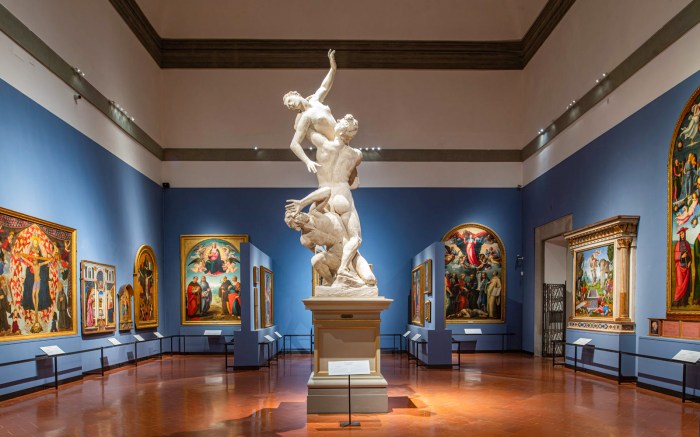
The Accademia Gallery is committed to preserving and promoting the art of Florence, Italy, and beyond. As part of this mission, the gallery has several exciting plans for the future.
Discover the beauty of the Accademia Gallery, home to masterpieces like Michelangelo’s David. If you’re planning your visit, check out our comprehensive travel itinerary template to ensure you make the most of your time. With our detailed guide, you can customize your itinerary to suit your interests and preferences, allowing you to explore the Accademia Gallery at your own pace and delve into the captivating history and artistry it holds.
One of the most significant developments is the planned renovation of the gallery’s historic building. The renovation will include upgrades to the gallery’s infrastructure, as well as the creation of new exhibition spaces. The gallery will also be working to improve its accessibility for visitors with disabilities.
Exhibitions
In addition to the renovation, the gallery is also planning a number of new exhibitions. These exhibitions will showcase the work of both established and emerging artists, and will explore a variety of themes related to art and culture.
Educational Programs
The Accademia Gallery is also committed to providing educational programs for visitors of all ages. These programs will include lectures, workshops, and guided tours. The gallery also offers a variety of online resources, including virtual tours and educational videos.
Challenges and Opportunities
The Accademia Gallery faces a number of challenges in the coming years. One challenge is the need to balance the preservation of the gallery’s historic building with the need to provide modern amenities for visitors. Another challenge is the need to attract new visitors while also maintaining the gallery’s reputation as a world-renowned destination.
Despite these challenges, the Accademia Gallery has a number of opportunities for growth in the future. One opportunity is the potential to collaborate with other museums and galleries around the world. Another opportunity is the potential to use technology to enhance the visitor experience.
The Accademia Gallery is confident that it can overcome the challenges it faces and continue to be a leading destination for art lovers from around the world.
Closing Notes
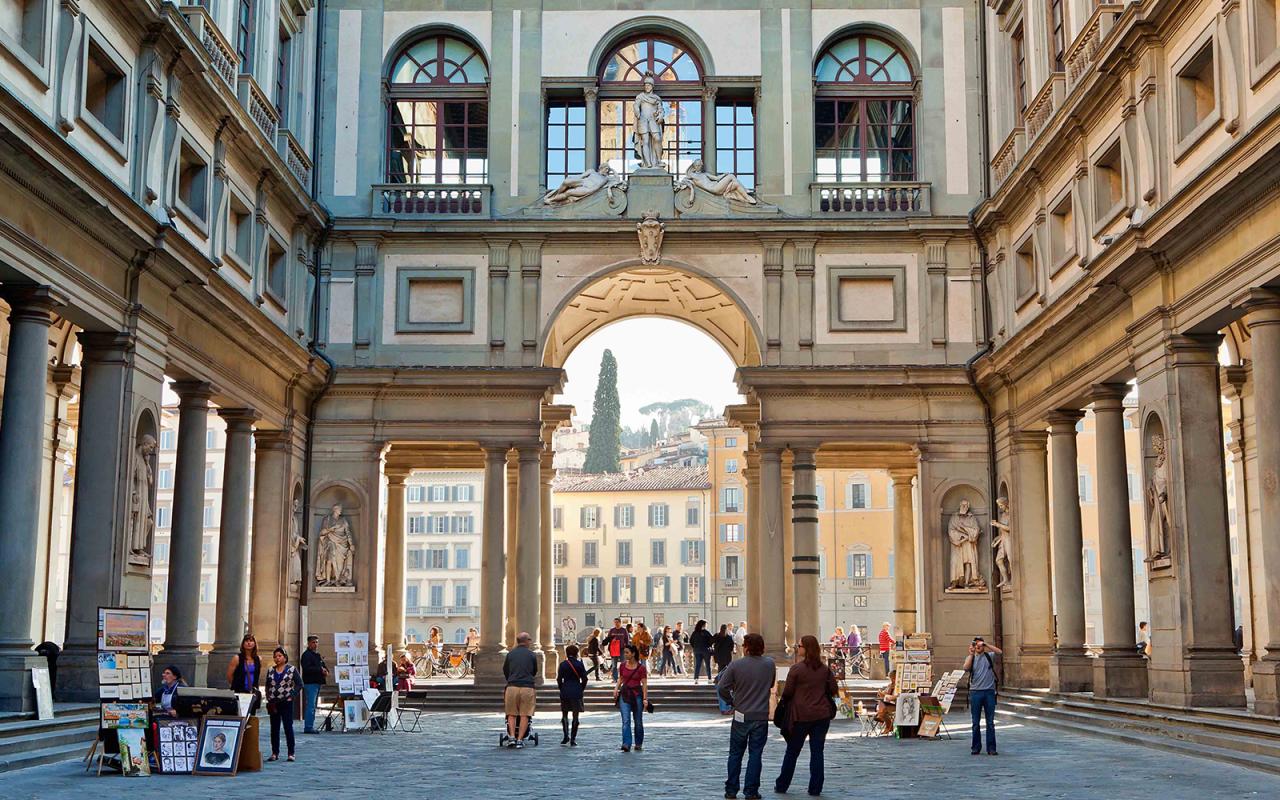
As you depart from the Accademia Gallery, you carry with you not only a newfound appreciation for the artistic wonders it holds but also a deeper understanding of the cultural and historical significance that has shaped both the gallery and the city of Florence. Its legacy continues to inspire and enchant, ensuring that the Accademia Gallery remains an eternal source of artistic pilgrimage for generations to come.
User Queries
What is the most famous artwork in the Accademia Gallery?
Michelangelo’s David is undoubtedly the most iconic masterpiece in the gallery’s collection.
When was the Accademia Gallery founded?
The gallery was founded in 1784 by the Grand Duke of Tuscany, Pietro Leopoldo.
What is the architectural style of the Accademia Gallery?
The gallery is housed in a former convent and hospital, and its architectural style is a blend of Renaissance and Neoclassical elements.